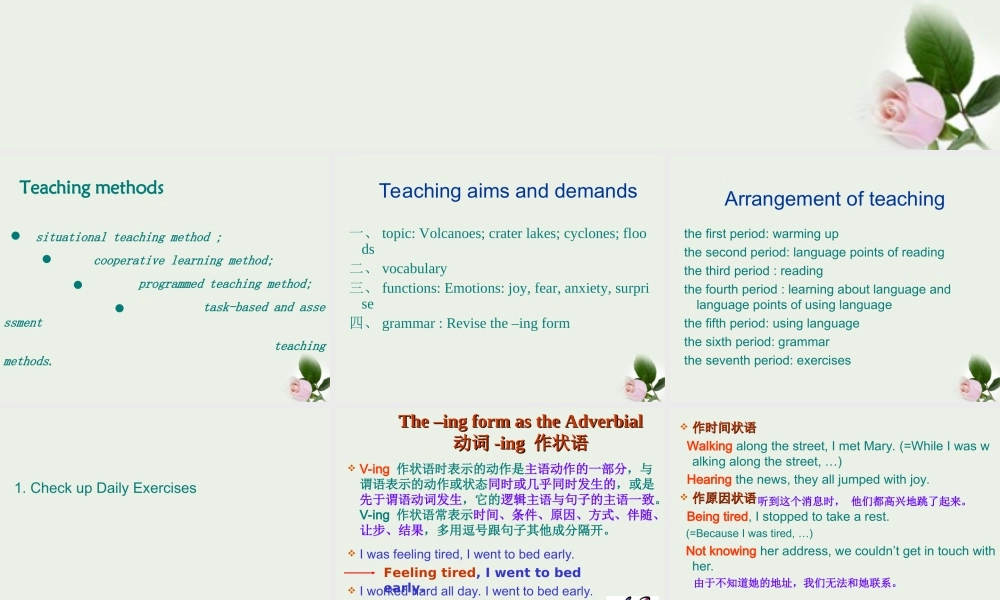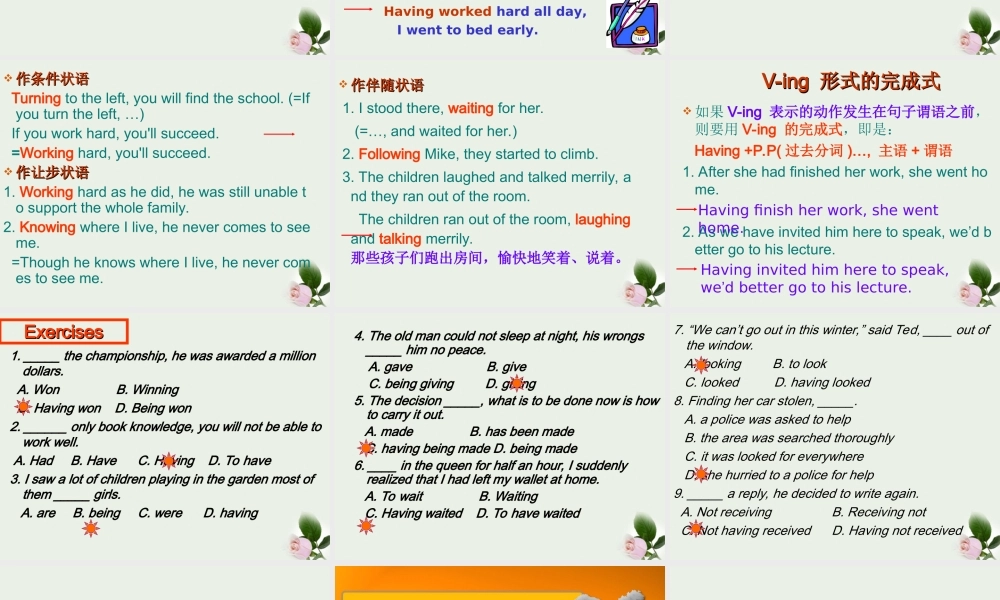Unit 5The sixth period Teaching methods situational teaching method ; cooperative learning method; programmed teaching method; task-based and assessment teaching methods.Teaching aims and demands一、 topic: Volcanoes; crater lakes; cyclones; floods二、 vocabulary三、 functions: Emotions: joy, fear, anxiety, surprise四、 grammar : Revise the –ing formArrangement of teachingthe first period: warming upthe second period: language points of readingthe third period : readingthe fourth period : learning about language and language points of using languagethe fifth period: using languagethe sixth period: grammarthe seventh period: exercises 1. Check up Daily ExercisesThe –ing form as the AdverbialThe –ing form as the Adverbial动词动词 -ing -ing 作状语作状语 V-ing 作状语时表示的动作是主语动作的一部分,与谓语表示的动作或状态同时或几乎同时发生的,或是先于谓语动词发生,它的逻辑主语与句子的主语一致。V-ing 作状语常表示时间、条件、原因、方式、伴随、让步、结果,多用逗号跟句子其他成分隔开。 I was feeling tired, I went to bed early. I worked hard all day. I went to bed early. Feeling tired, I went to bed early.Having worked hard all day, I went to bed early. 作时间状语作时间状语 Walking along the street, I met Mary. (=While I was walking along the street, …) Hearing the news, they all jumped with joy. 作原因状语作原因状语 Being tired, I stopped to take a rest. (=Because I was tired, …) Not knowing her address, we couldn’t get in touch with her. 由于不知道她的地址,我们无法和她联系。听到这个消息时, 他们都高兴地跳了起来。 作条件状语作条件状语 Turning to the left, you will find the school. (=If you turn the left, …) If you work hard, you'll succeed. =Working hard, you'll succeed. 作让步状语 作让步状语 1. Working hard as he did, he was st...




